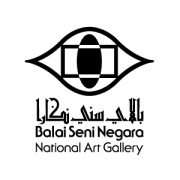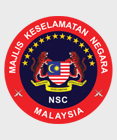PHOTO ART EXHIBITION : ARTWORKS QR CODE #20
CURATOR NOTES:
This work is a selective few portrait with four variation within a piece by Soraya compared to the other artist in the Imaging Self series. In the portraits, Datuk Lat is seen to be holding piece of papers with a variation of features (hair, eyes, expressions) of Lat’s main character in Kampung Boy, ‘Mat’.
ABOUT LAT:
Lat was born in Kota Bharu Gopeng Perak on 5th March 1951. A Malaysian cartoonist, he has shown interest in illustration as early at the age of 13. In order to earn a living, Datuk Lat accepted a position as crime reporter in Berita Harian before he was transferred to New Straits Times. He was required to observe and interact with the myriads of lives which catalyzed for his cartoon inspiration. Ironically, his experience as a reporter has somehow deepens his passion in being a cartoonist and less of a crime reporter. (The Varied Drawing Lots of Lat, Malaysian Cartoonist by John Lent [The Comics Journal] April 1999).
Datuk Lat continued to be a reporter until he was appointed as New Straits Time’s paper column cartoonist offered by editor-in-chief at the time, Tan Sri Lee Siew, who was impressed with his cartoons relating to circumcision ceremony published in Asia Magazine (1974). Datuk Lat was assigned to document Malaysian culture which later became a series known as Scenes of Malaysian Life. He studied at St Martin’s School of Art in London for 4 months before returning to Malaysia as a full-time cartoonist in 1975 with a total freedom of his work.
Datuk Lat gained his international recognition through his autobiographical cartoon, The Kampung Boy. The cartoon which was famously known for its heart-warming depiction of Malay’s culture rural life has been re-printed 16 times by 2009 (Specifics of reprint: The Kampung Boy Kuala Lumpur, Malaysia: Berita Publishing 2009) and published in other languages such as Portugese, French as well as Japanese (Chua, Siew Ching “Seriously, Lat” The Hilt, September 2007).
As he received national consciousness through his remarkable illustration, Datuk Lat is recognized as one of the most renowned cartoonists in Malaysia (Rohani Hashim “Lat’s Kampong Boy: Rural Malays in Tradition and Transition” Asian Futures, Asian Traditions, 2005).

















